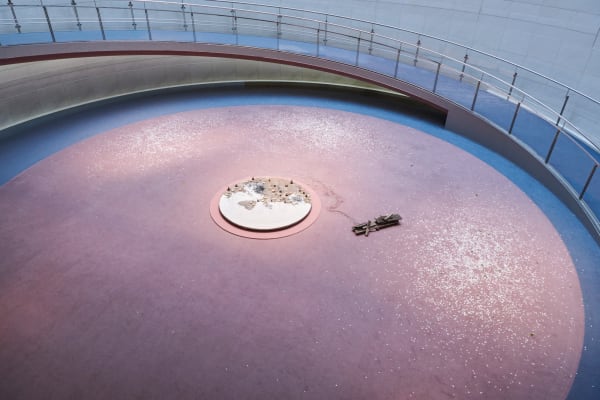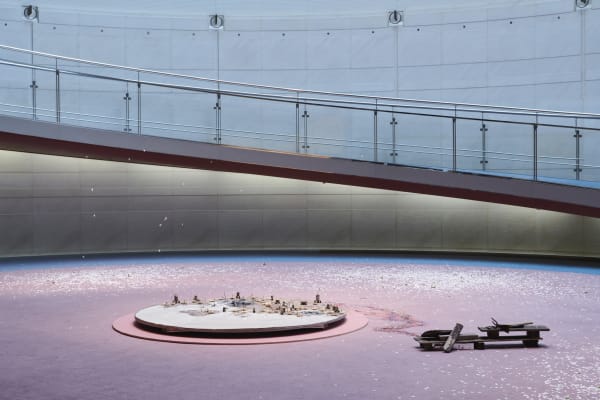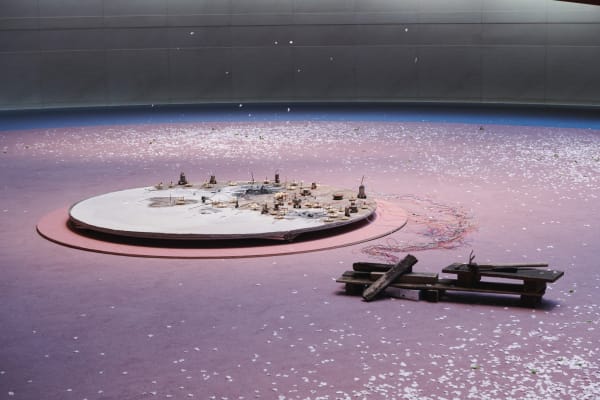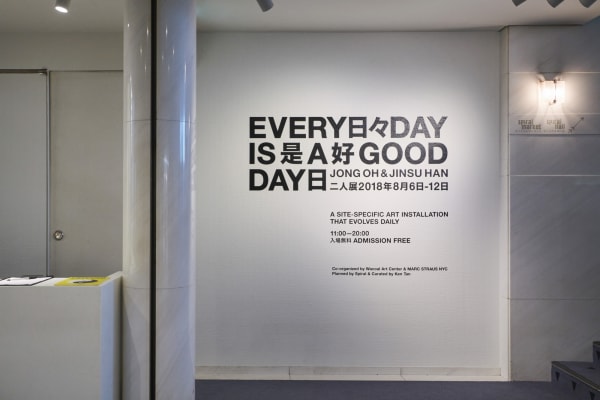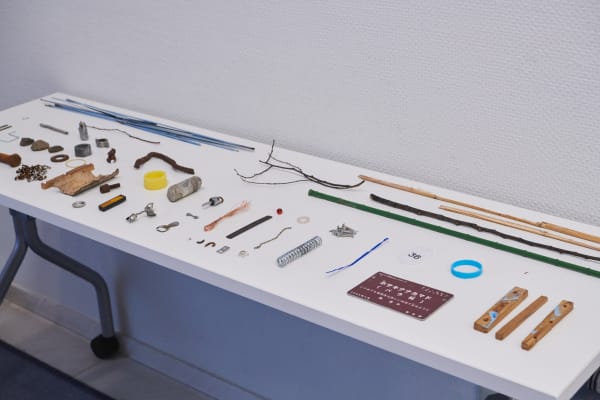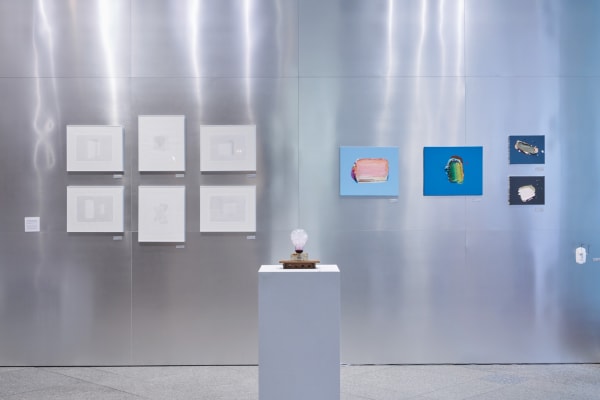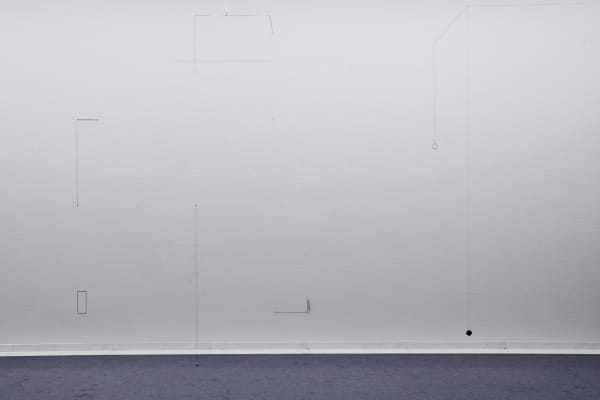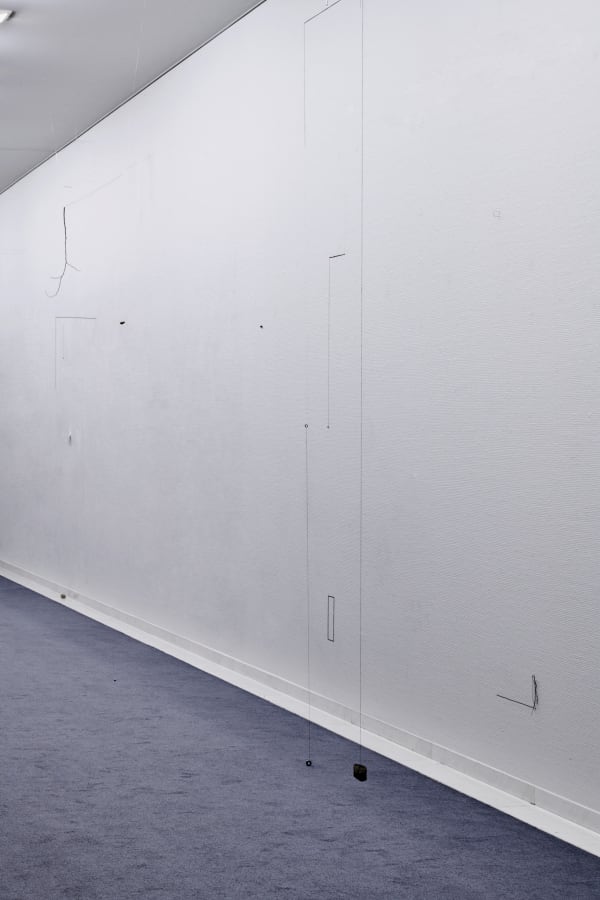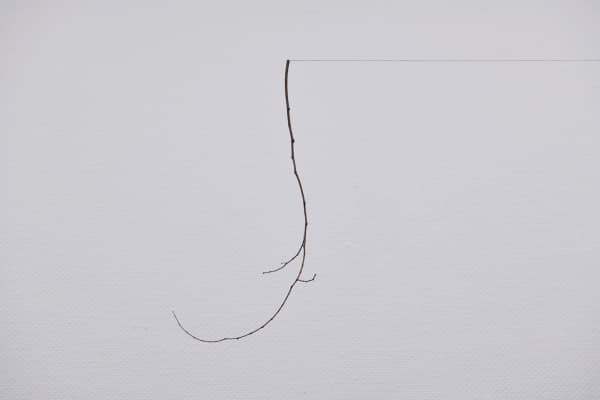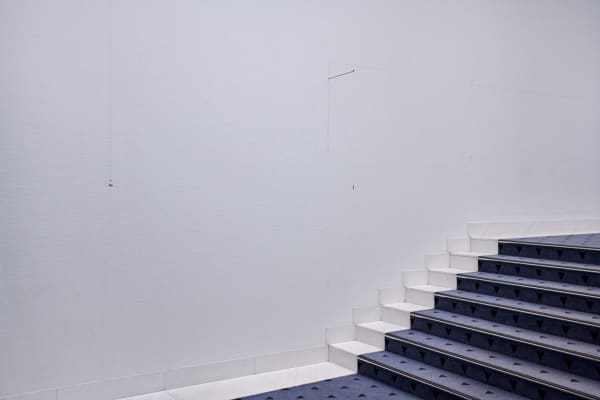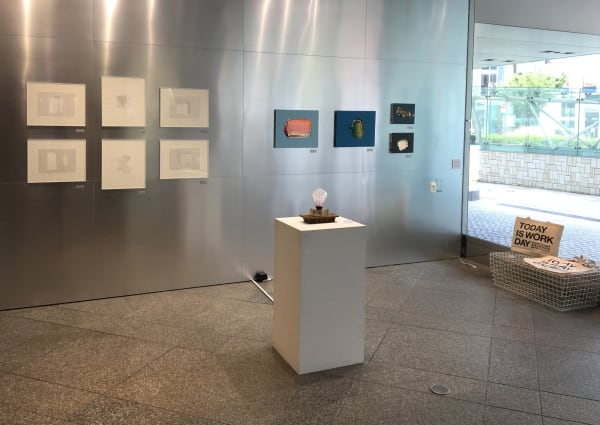Every Day Is a Good Day: Jong Oh & Jinsu Han
MARC STRAUS and Spiral, Wacoal Art Center (Tokyo, Japan) are pleased to present Every Day Is A Good Day (日々是好日), a performance-based exhibition featuring live installations made on-site by contemporary artists Jong Oh and Jinsu Han. The exhibition is planned by Spiral and curated by MARC STRAUS Gallery director and partner, Ken Tan.
The concept of the exhibition derives from the ancient proverb: “Nichi nichi kore kōnichi (日々是好日)” or “Every Day Is A Good Day”. First spoken more than a thousand years ago by Zen Master Yun Men, it is a profound meditation on living: that one’s experience of life is based on one’s perception of it. For the exhibition artists Jong Oh and Jinsu Han will each respond through their respective practices, and develop installations that evolve daily throughout the exhibition.
“BALANCE IS THE MEDIUM” Catalog Essay by Ken Tan:
Good News, Bad News
In the winter of 2017 I received a note from Tsutomu Okada, Senior Curator at Spiral, confirming the exhibition of artists Jinsu Han and Jong Oh for the beginning of August 2018. We have been trying to arrange a slot since 2016 when Okada made a timely visit to New York. He had unexpectedly walked into a popup exhibition I curated of the same two artists. The exhibition, “The Apotheosis of the Fish Market”, had featured site-specific installation works of Han and Oh made in an abandoned centenarian building in Chinatown, New York. Okada was interested in bringing that concept back to Spiral, Tokyo, so talks ensued.
Despite the joy of finally receiving the invitation, much to my dismay, the available dates meant that the show would only be on view for one short week. As a gallerist and curator, I was accustomed to no less than a six-week exhibition period. Was it worth going through the effort only to have it end so soon? Were we to call it off after weeks of discussions and perseverance, and dash the hopes of working with Okada and his prestigious Spiral team? I was in a dilemma.
Suddenly it hit me: maybe it is simply a matter of perspective. What if, instead of thinking of the project as an exhibition in the traditional sense, we approached it as a performance. The short week then becomes very special indeed, making the show an exclusive event! With newfound enthusiasm, I agreed and got right to work on the proposal.
Finding the Balance of Things
I recalled the ancient Zen koan “Every day is a good day”, taught by Zen Master Yunmen Wenyan (864-949). Found in one of the most influential of Zen literature, The Blue Cliff Record, Case 6, it goes like this:
Yunmen introduced his subject by saying, “I do not ask you about the fifteenth (holy day) of the month. Come; give me a phrase about after the fifteenth.” And he himself responded, “Every day is a good day.”
This is immensely profound. To me it means that the nature of ‘good’ or ‘bad’ is really based on one’s point of view. By looking at my situation differently, an opportunity readily presented itself. Given today’s progress-driven world, I feel it is all the more necessary to cultivate the mental discipline of not categorizing everything into gain and loss. It was also a bonus to learn that “Every day is a good day” was one of artist John Cage’s favorite sayings. With absolute certainty, I knew that this was the purpose of our performance-based exhibition: to investigate the balance of things and to express the beauty of natural order through art.
How would Jinsu Han and Jong Oh, two contemporary artists with polarizing practices and ideas respond to this? Han is a maker of dynamic kinetic art, and Oh inversely creates minimal sculptures that are still and quiet. In order to discover harmony, the viewer should be placed in the middle to witness how, with ‘Every day is a good day’ as a guiding philosophy, these opposing yet interconnected extremes negotiate towards equilibrium. Thus, the artists had to work interdependently in separate physical spaces and conceptual directions: Oh will build his installation, adding to it daily, while Han’s mechanical installation will reduce itself through removal to a point of disappearance. Furthermore, both artists had to perform actions on-site, responding spontaneously to the evolving environment. In other words, this was a daily theatre of Creation and Destruction, starring Yin and Yang.
John Cage once reflected: “Our intention is to affirm this life, not to bring order out of chaos, nor to suggest improvements in creation, but simply to wake up to the very life we’re living, which is so excellent once one gets one’s mind and desires out of its way and lets it act of its own accord.” We are here, participating in the present. Moreover, these two artists are my friends, whom I completely respect and enjoy working with.
Jong Oh: Saying the Most with the Least
Jong Oh is a New York based Korean artist who creates delicate installations with the humblest of materials: string, tiny metal chains, plexiglass, and graphite. In precise and orchestrated balance, these elements are combined to construct geometric shapes that appear to levitate in space. Oh’s site-specific constructions respond to the conditions of light and architecture, defining empty space by bringing attention to it. Like haikus, Oh uses very little to express the universal.
It was only through my first encounter with Oh’s work in 2015 did I fully appreciate the complexity of sensations it evoked. Suspended overhead just far enough not to be too distant, I could discern a faint cuboid structure. Moving around it, it produced an illusion where shapes seemed to shift in and out of view. Its outlines were made of ordinary string that Oh had accentuated by applying paint, much like drawing in space. How did this float in mid-air? The almost imperceptible monofilament lines were engineered like a John Roebling’s bridge to the walls and ceiling. I enjoyed his sensible choice of materials, such as a thin metal chain that used its own weight to keep a straight line while its golden luster provided visual pleasure.
One can only imagine the uncertainty Oh faces with each installation, which requires him to do it himself on site. Spiral, Japan, would be a completely new environment filled with possibilities. To further explore our show’s core idea, I suggested Oh incorporate objects found during his daily activities while in Tokyo into his installation. Oh is familiar with utilizing found objects for their physical properties. For example, a discarded handle provides a beautiful sculpted curve, or bits of yarn are lines with wonderfully fuzzy character. These unexpected items become poetic, wabi-sabi gestures.
Jinsu Han: The Beauty of Repetition
In contrast to Oh’s meditative structures are the kinetic works of Jinsu Han. I was immediately drawn to his raw mechanical inventions when I first saw them in 2012. Full of attitude with their wild sinewy wires and exposed brass gears, his odd machines are programmed to perform mesmerizing movements. I am reminded of Jean Tinguely’s work, but in Han’s they possess a deeper elegiac Eastern sense. Han’s belief is that everything in the world is perpetually in metamorphosis. Through repeated actions he exposes the beauty in the most ordinary routines. For instance in “Spanish Dancer” (2016), an industrial cord is threaded through a high-speed motor so it loops at incredible speeds to produce a hypnotic Stroboscopic dance.
For the show, I have asked Han to conceptualize a dynamic installation that will deplete its physical form by the end of the week. In other words, Han’s work is about evanescence. At the time of this writing, Han has shared that he intends to plant hundreds of flower petals overhead in the Atrium, a large rotunda space. A time-based device will release several petals at intervals until the installation is completely barren. I got excited upon hearing his proposal. Just imagine this simulation of Nature and her seasons! The petals in their gentle descent present one of the most sublime dances that only gravity can choreograph.
On the ground, just below the canopy of petals, Han proposes to install a large, dynamic tableau consisting of broken toy bird-heads with flashing LED eyes, and moving mechanical arms with bird feathers attached to their ends. These feathers are set to rigorously push paint in circular paths on the ground, generating a marbling pattern. Perhaps this ‘pond’ installation is a metaphor for memory: one’s pool of memories are broken, constantly muddied and overwritten. Inevitably, the petals will land here, affecting its state to create new situations.

